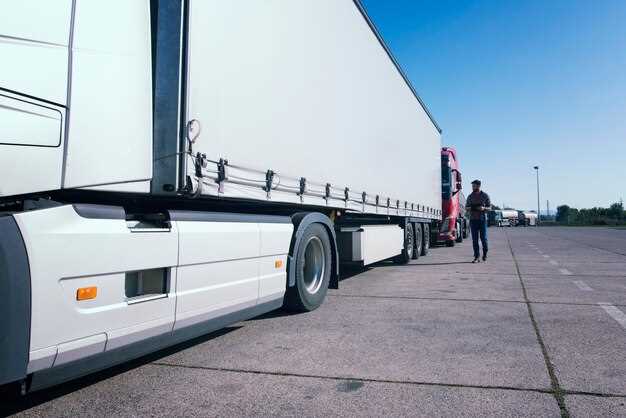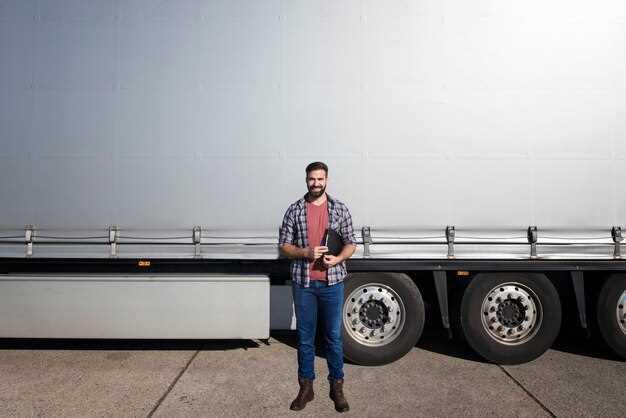
When it comes to transporting your car, having the right equipment is essential for ensuring safety and efficiency. A car hauler trailer serves as a vital tool that facilitates the movement of vehicles, whether for personal use, business purposes, or recreational activities. Selecting the right hauler trailer can make a significant difference in the overall transport experience.
Understanding the various types of car hauler trailers available is the first step in making an informed decision. Different models are designed to handle various weights, sizes, and styles of vehicles. It’s important to assess your vehicle’s specifications and your specific transport needs before choosing a trailer that best fits your requirements. A well-chosen hauler will not only protect your vehicle during transit but also ensure that you comply with legal and safety standards.
In this article, we will explore the key factors to consider when choosing a car hauler trailer. From weight capacity and design options to additional features and accessories, every detail plays a crucial role in finding the perfect match for your vehicle. Whether you’re a car enthusiast, a dealer, or just someone looking to transport a vehicle across town, the right transport solution is crucial for a smooth and secure journey.
Understanding Weight Capacity and Trailer Types
When selecting a car hauler trailer, understanding weight capacity is crucial to ensure safe and effective transport of your vehicle. Each trailer is designed with a specific weight limit, known as the Gross Vehicle Weight Rating (GVWR), which includes the weight of the trailer itself, the load, and any additional cargo. It is essential to compare this rating with the weight of your vehicle to avoid overloading, which can lead to hazardous driving conditions and potential damage to both the trailer and the vehicle being transported.
There are various types of trailers available, each designed for specific uses. Flatbed trailers are versatile and commonly used for transporting cars, as they provide easy loading and unloading capabilities. Enclosed trailers offer additional protection from the elements and theft but often have a lower weight capacity due to their structure. Car trailers equipped with ramps facilitate the loading process, making them ideal for vehicles with low ground clearance. Understanding the differences between these trailer types allows you to choose one that meets both your weight requirements and transport needs effectively.
In addition to weight capacity, consider the trailer’s axle configuration. Single axle trailers are lightweight and suitable for smaller vehicles, while dual or triple axle options provide greater stability and weight capacity, supporting heavier vehicles. Always ensure that your chosen trailer not only accommodates the weight of your car but also complies with local regulations regarding towing and transport. Properly matching your car and trailer will lead to a safer and more efficient transport experience.
Matching Trailer Features to Your Vehicle’s Specifications

When selecting a car hauler trailer, it is essential to ensure that its features align with the specifications of your vehicle. Understanding the towing capacity of your vehicle is the first step. This capacity determines how much weight your vehicle can safely tow, which directly influences the type and size of the hauler you should consider.
Next, examine the trailer’s gross vehicle weight rating (GVWR). This rating should not exceed your vehicle’s towing capacity. A mismatch can lead to handling issues, increased wear and tear on your vehicle, or even hazardous driving situations. Always check the manufacturer’s specifications for both your vehicle and the trailer.
The type of hauler is another critical aspect. Enclosed trailers offer protection from the elements and additional security for your car, while open trailers are often lighter and easier to maneuver. Consider what will best suit your vehicle’s capabilities and your transportation needs.
Pay attention to the trailer’s hitch requirements as well. Ensure that your vehicle is equipped with the proper hitch class that matches the trailer’s specifications. This connection is crucial for safe towing. Not only should the hitch be compatible, but you must also consider additional components such as safety chains and brake controllers.
Finally, think about the overall design and features of the trailer. Elements such as ramp style, load height, and tie-down points should be evaluated. The right features will facilitate loading and unloading your vehicle efficiently while ensuring it is securely fastened during transport.
Tips for Safe Loading and Towing Practices

When it comes to transporting your vehicle with a hauler trailer, safety should always be your top priority. Proper loading and towing techniques are essential for ensuring a smooth and secure transport experience.
Start by checking the weight rating of your hauler trailer. Ensure that your vehicle’s weight is within the trailer’s capacity to prevent overloading. Distribute the weight evenly across the trailer to maintain balance during transport. Ideally, the vehicle should be loaded so that approximately 60% of its weight is in the front half of the trailer while 40% remains in the rear. This distribution promotes stability while towing.
Before loading your vehicle onto the trailer, ensure the trailer is on a level surface. Use wheel chocks to prevent the trailer from rolling while you load. Once the vehicle is on the trailer, secure it using high-strength straps or chains. Make sure the tie-downs are tight and check them again after the vehicle has been loaded, as they may settle during the initial transport.
When towing, it’s critical to adhere to speed limits and adjust your driving habits to account for the extra weight of the trailer. Allow longer distances for braking and take wide turns to avoid scraping the hauler. Be mindful of the increased stopping distance and maneuverability reduction that comes with towing a loaded trailer.
Keep the trailer and vehicle’s lights functioning correctly. Before setting off, verify that all lights, including turn signals and brake lights, are operational. Regularly check the trailer’s brakes, tires, and couplings for any signs of wear and tear.
By following these tips for safe loading and towing, you can significantly reduce the risk of accidents and ensure that your vehicle is transported securely and efficiently. Prioritizing these practices will lead to a more successful hauler trailer experience.





